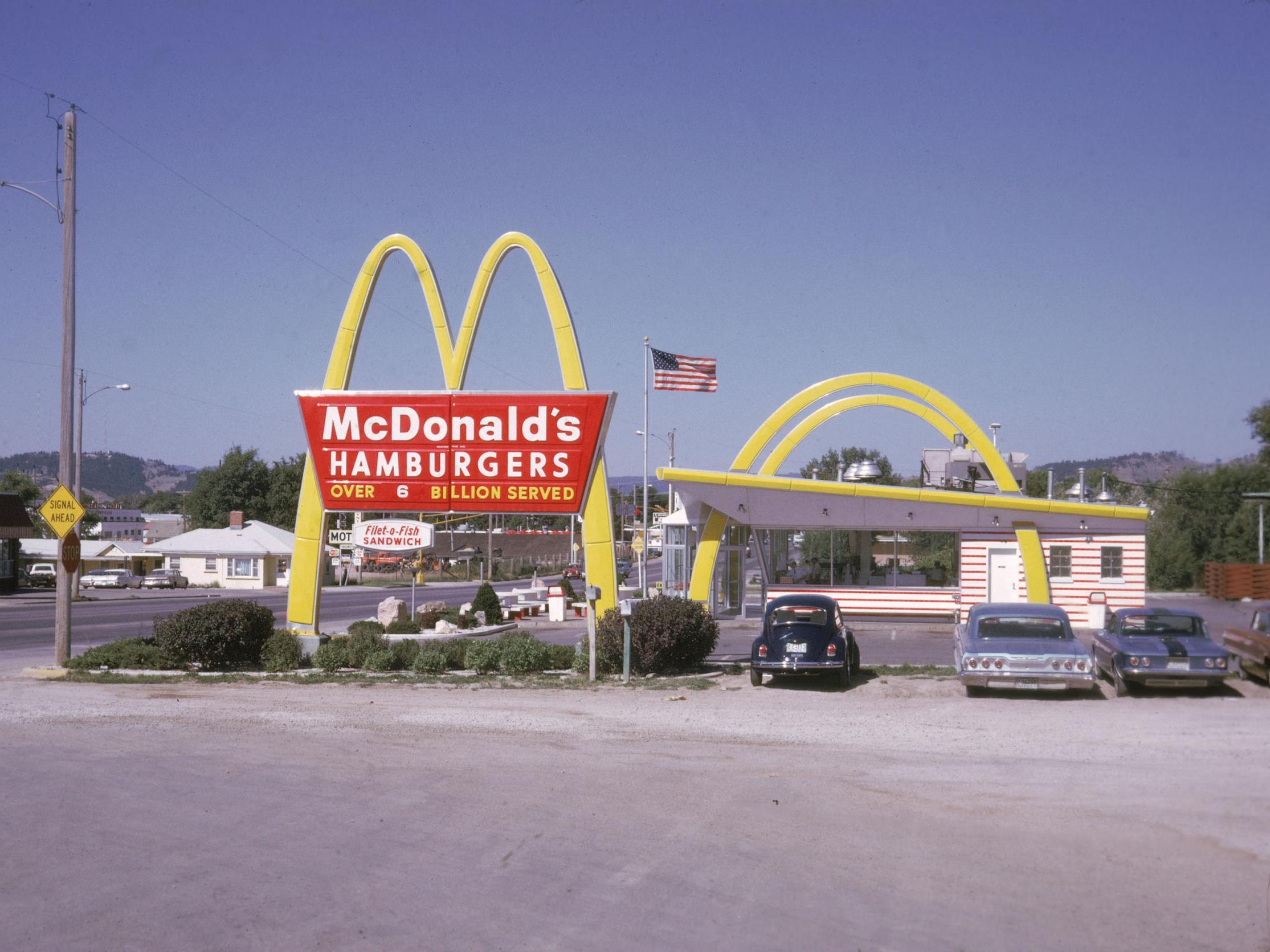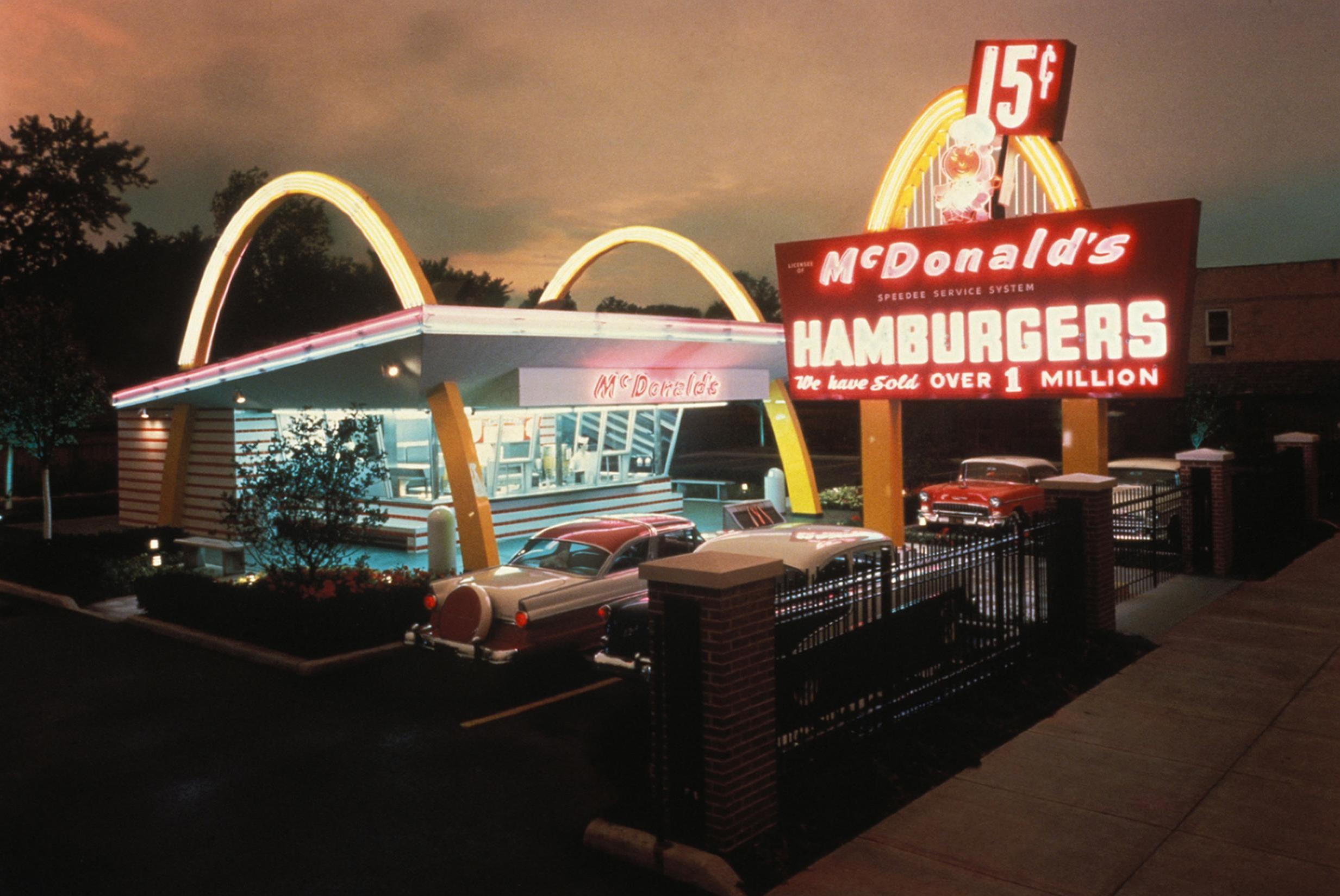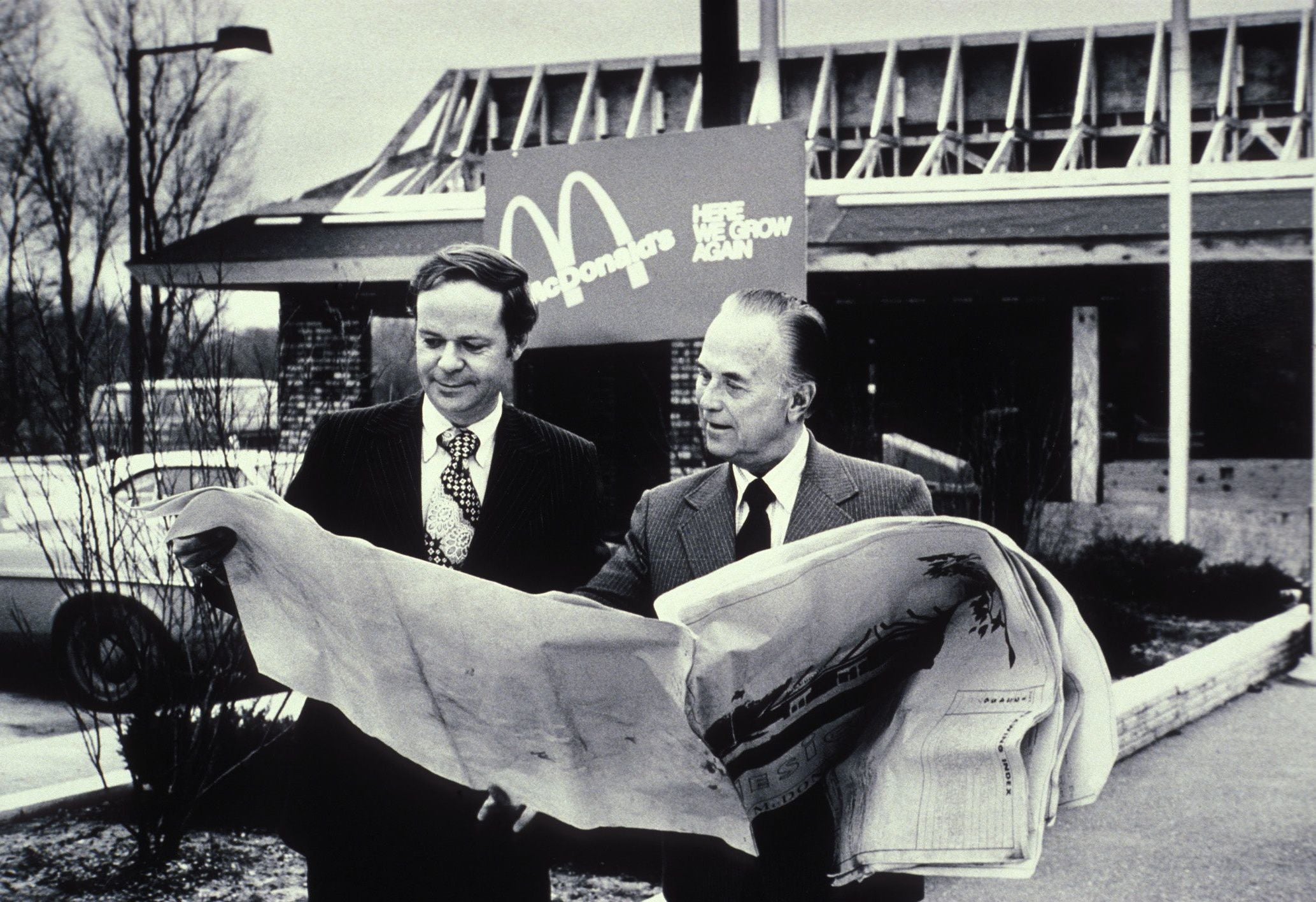The Independent's journalism is supported by our readers. When you purchase through links on our site, we may earn commission.
McDonald’s 80th anniversary: How the restaurant went from a family-run franchise to a fast food giant
McDonald's has reopened several branches across the UK, having closed in response to the coronavirus pandemic

Your support helps us to tell the story
From reproductive rights to climate change to Big Tech, The Independent is on the ground when the story is developing. Whether it's investigating the financials of Elon Musk's pro-Trump PAC or producing our latest documentary, 'The A Word', which shines a light on the American women fighting for reproductive rights, we know how important it is to parse out the facts from the messaging.
At such a critical moment in US history, we need reporters on the ground. Your donation allows us to keep sending journalists to speak to both sides of the story.
The Independent is trusted by Americans across the entire political spectrum. And unlike many other quality news outlets, we choose not to lock Americans out of our reporting and analysis with paywalls. We believe quality journalism should be available to everyone, paid for by those who can afford it.
Your support makes all the difference.The fast food industry is saturated with household names, from Five Guys to Burger King, KFC to Subway.
However, for the majority of consumers, the term “fast food” is indisputably synonymous with one particular brand – the red and yellow, American-born, grease machine that is McDonald’s.
The franchise was founded by two brothers in the first half of the 20th century and is celebrating its 80th anniversary on Friday 15 May.
With more than 37,000 restaurants in 120 countries across the globe, the chain has come a long way since serving 15 cent hamburgers at drive-in restaurants in the 1940s.
Here is how McDonald’s transformed from a family-run business to a global franchise:
Humble beginnings
Very few people likely think twice when they hear the name McDonald’s. They may not pause to wonder where the name came from or, more accurately, who it came from.
No, it doesn’t come from Old MacDonald who had a farm. It comes from the two brothers who, through their hard work, gave McDonald’s its fresh start 80 years ago.
In the late 1930s, the McDonald family, including brothers Richard and Maurice McDonald, otherwise known as Dick and Mac, relocated to California from New England, as told on the McDonald's website.
Their parents, Patrick and Margarete McDonald, had emigrated to the US from Ireland as children, and raised their five children (two boys and three girls) in New Hampshire in poor conditions.
Following their move to California, Dick and Mac McDonald attempted to break into the movie business, obtaining jobs at Motion-Picture Studios, Alan Hess reported in 1986 article "The Origins of McDonald's Golden Arches".
Fortunately, they soon discovered they were far better suited to flipping burgers than they were to mingling with Hollywood stars.
In 1937, their father opened a food stand on America’s famous Route 66, historian Quentin Skrabec wrote.
The Airdrome, as the food stand was called, sold hot dogs, hamburgers and "all-you-can-drink" orange juice, an early iteration of refillable beverages.
Three years after the food stand began operating, the McDonald brothers gave the eatery a rebrand, moving it to a new location in San Bernardino and renaming it McDonald’s Bar-B-Que.
As the name indicated, the majority of the items on the menu, which consisted of 25 different food options, were barbecue themed.
However, the brothers noticed that one dish was especially popular among their customers: the hamburger.
This realisation set the cogs turning in their minds, prompting them to simplify their menu with a particular focus on their most favoured item, it stated in the 1994 book Made In America.
With a condensed menu consisting of burgers, potato chips, apple pie, soft drinks and coffee, in 1948 Dick and Mac renamed their establishment for the final time, christening it McDonald’s.
In addition to reducing their menu, the McDonald brothers also simplified the way in which consumers were served food at their restaurants, swapping staff who waited on customers at their cars for self-service.
By the mid-20th century, Dick and Mac boasted a flourishing business, planting the seeds for the mass growth of the fast food industry.
However, another man’s involvement was key for turning a successful family-run franchise into a bona fide giant.
Capitalising on the franchise
While the McDonald brothers gave the fast food chain its name, fast food tycoon Ray Kroc’s involvement in the company gave it the boost it needed to achieve unprecedented levels of success for eight decades.
Joining the business in the 1950s, Kroc helped to expand the franchise beyond even his greatest expectations, branching out on a global scale.
However, before joining ranks with the McDonald brothers, the Chicago-born businessman was working as a milkshake salesman.

Prior to his involvement, the McDonald brothers had already embarked on the process of turning their restaurant chain into a franchise.
They collaborated with a couple of franchisees to make this aspiration a reality, including Neil Fox, Roger Williams and Burdette Landon. All three franchisees worked at the General Petroleum Corporation.
In addition to the culinary side of their restaurant, Dick and Mac had also been placing their focus on the aesthetic vision they had for their business moving forward.
The brothers employed the services of an architect called Stanley Clark Meston, the man behind the famous golden arches that customers see at every McDonald’s restaurant today.
Fox’s McDonald’s stand, which opened in May 1953 in Phoenix, Arizona, was the first to feature the world famous golden arches, while the stand opened by Williams and Landon in Downey, California in August 1953 is the oldest surviving McDonald’s restaurant to date.
In 1954, milkshake machine distributor Kroc learnt that eight of his milkshake machines were being used at the McDonald’s restaurant in San Bernardino, California, Money reported.
Intrigued by the fast food chain and its business model, Kroc went into business with the McDonald brothers with the aim of further developing their firm.
At the time, McDonald’s had six restaurants in operation. However, Kroc aspired to branch out across the entire US, a target that he set about achieving with vigour., beginning with his first McDonald's restaurant, which he opened in Illinois in April 1955.

Kroc enlisted the help of Harry J. Sonneborn, previously vice president of finance for Tastee-Freez, to grow the business.
Sonneborn suggested a novel way of expanding the franchise, which involved buying the real estate on which future chains of the restaurants would be built.
This course of action became known as the “Sonneborn model”.
“The genius of the Sonneborn financial model is that the company financed the property using long-term, fixed rates but passed along variable fees to the franchisees,” explained business and investment author Adam Brownlee.
“As sales and prices inevitably rose over the years, the franchisee’s payments to corporate as a percent of sales inflated, while the company’s costs remained virtually flat. This model turned McDonald’s into a cash flow powerhouse and is still the backbone of the company today.”
Kroc’s initial vision was to open 1,000 McDonald’s restaurants, solely in America. However, by 1967 the firm had also opened franchises in Canada and Puerto Rico, setting off a chain of events that would result in the fast food chain boasting more than 37,000 restaurants in 120 countries across the globe.
McDonald's reportedly recorded a net income of over $6bn (£4.92bn) in 2019, increasing from the previous year's figure of $5.92bn ($4.85bn).
McDonald’s in the headlines
Just like the majority of other food franchises, McDonald’s has recently had to adapt to the ongoing coronavirus pandemic.
In March, it was reported that McDonald’s had fully closed all of its UK and Ireland restaurants, having previously offered takeaway and drive-thru services during lockdown.
The company later announced it was carrying out “operational tests” in preparation for the reopening of restaurants, before stating that 15 UK sites would be reopened for delivery only from Wednesday 13 May.
However, the reopening of the restaurants was not entirely smooth-sailing.
According to several tweets, many customers found that their UberEats app kept crashing when they tried to order from McDonald’s.
A spokesperson for McDonald’s replied on Twitter by clarifying that the restaurant was experiencing a surge in demand.
“Some of our restaurants are currently experiencing very high levels of orders and may not be able to facilitate all delivery requests and deliveries may become temporarily unavailable,” they said.
“Please do check back soon on UberEats.”
Join our commenting forum
Join thought-provoking conversations, follow other Independent readers and see their replies
Comments